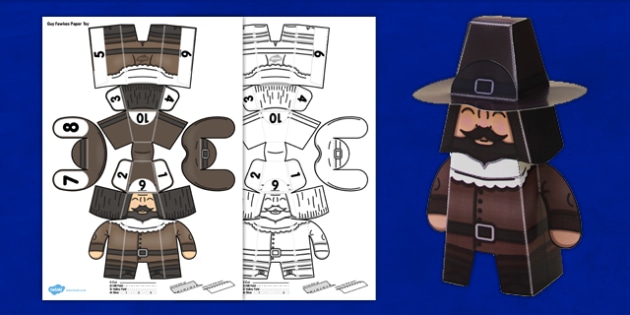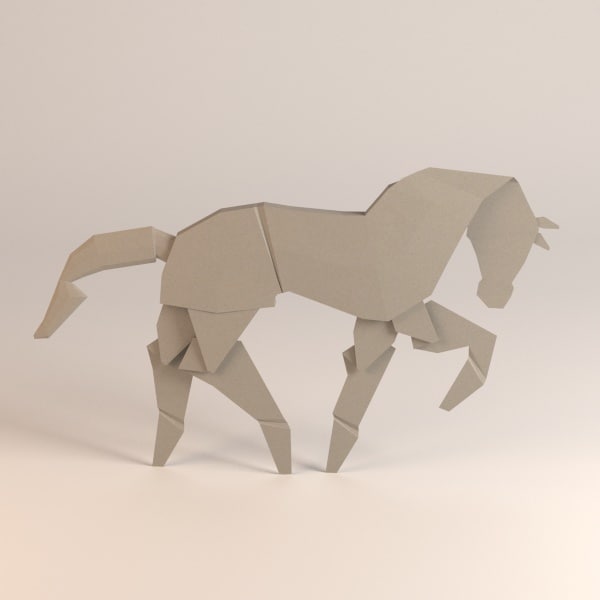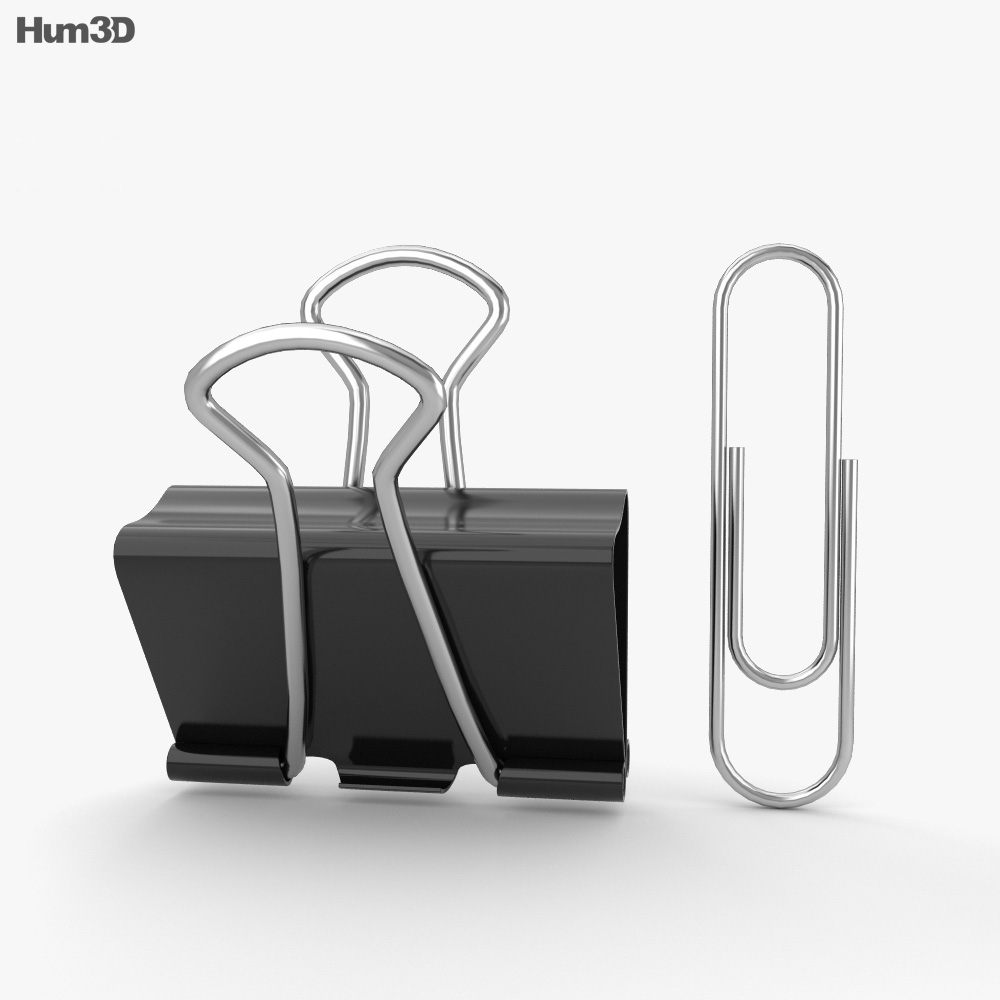3d Model To Paper
Give this 3D paper shoe to your girl and ask her to be your Cinderella! Or make one for yourself to use as a jewelry box. And you know what? Just 1 sheet of paper is required. And, as usual, our free template and step by step tutorial will guide you through the process. Video tutorial to make paper 3D high heel shoe.
Paper models, also called card models or papercraft, are models constructed mainly from sheets of heavy paper, paperboard, card stock, or foam.
- 3Availability
Details[edit]
This may be considered a broad category that contains origami and card modeling. Origami is the process of making a paper model by folding a single paper without using glue or cutting while the variation kirigami does. Card modeling is making scale models from sheets of cardstock on which the parts were printed, usually in full color. These pieces would be cut out, folded, scored and glued together. Pepakura is the art of combining these model types to build complex creations such as wearable suits of armor, life size characters, and accurate weapon models.

Sometimes the model pieces can be punched out. More frequently the printed parts must be cut out. Edges may be scored to aid folding. The parts are usually glued together with polyvinyl acetateglue ('white glue', 'PVA'). In this kind of modeling the sections are usually pre-painted, so there is no need to paint the model after completion. Some enthusiasts may enhance the model by painting and detailing. Due to the nature of the paper medium, the model may be sealed with varnish or filled with spray foam to last longer. Some enthusiasts also use paper crafts or perdurable to do life-sized props starting by making the craft, covering it with resin and painting them. Some also use photo paper and laminate them by heat, thus preventing the printed side from color wearing-out, beyond improved realistic effect on certain kinds of models (ships, cars, buses, trains, etc.). Paper crafts can be used as references to do props with other materials too.
History[edit]
The first paper models appeared in Europe in the 17th Century with the earliest commercial models were appearing in French toy catalogues in 1800.[1] Printed card became common in magazines in the early part of the 20th century. The popularity of card modeling boomed during World War II, when paper was one of the few items whose use and production was not heavily regulated.[2]
Micromodels, designed and published in England from 1941 were very popular with 100 different models, including architecture, ships, and aircraft.[3] But as plastic model kits became more commonly available, interest in paper decreased.
Availability[edit]
The Robert Freidus Collection, held at the V&A Museum of Childhood has over 14000 card models exclusively in the category Architectural Paper Models.[4] Since paper model patterns can be easily printed and assembled, the Internet has become a popular means of exchanging them. Commercial corporations have recently begun using downloadable paper models for their marketing (examples are Yamaha and Canon).
The availability of numerous models on the Internet at little or no cost, which can then be downloaded and printed on inexpensive inkjet printers has caused its popularity again to increase worldwide. Home printing also allows models to be scaled up or down easily (for example, in order to make two models from different authors, in different scales, match each other in size), although the paper weight might need to be adjusted in the same ratio.
Inexpensive kits are available from dedicated publishers (mostly based in Eastern Europe; examples include Halinski, JSC Models and Maly Modelarz, a portion of the catalog of which date back to 1950.
Experienced hobbyists often scratchbuild models, either by first hand drawing or using software such as Adobe Illustrator. An historical example of highly specialized software is Designer Castles for BBC Micro and Acorn Archimedes platforms, which was developed as a tool for creation of card model castles.[5] CAD and CG software, such as Rhino 3D, 3DS Max, Blender, and specialist software, like Pepakura Designer from Tama Software and Waybe or Dunreeb Cutout or Ultimate Papercraft 3D, may be employed to convert 3D computer models into two-dimensional printable templates for assembly.
3D models to paper models[edit]
The use of 3D models greatly assists in the construction of paper models, with video game models being the most prevalent source. The video game or source in question will have to be loaded into the computer. Various methods of extracting the model exist, including using a model viewer and exporting it into a workable file type, or capturing the model from the emulation directly. The methods of capturing the model is often unique to the subject and the tools available. Readability of file formats including propriety ones could mean that a model viewer and exporter is unavailable outside of the developer. Using other tools that capture rendered 3D models and textures are often the only way to obtain them. In this case, the designer may have to arrange the textures and the wire frame model on a 3D program, such as SketchUp, 3DS MAX, Metasequoia, or Blender before exporting it to a papercraft creating program, such as Dunreeb Cutout or Pepakura Designer by Tama software. From there the model is typically refined to give a proper layout and construction tabs that will affect the overall appearance and difficulty in constructing the model.
Subjects[edit]
Because people can create their own patterns, paper models are limited only by their designers' imaginations and ability to manipulate paper into forms. Vehicles of all forms, from cars and cargo trucks to space shuttles are a frequent subject of paper models, some using photo realistic textures from their real-life counterparts for extremely fine details. Architecture models can be very simple and crude forms to very detailed models with thousands of pieces to assemble. The most prevalent designs are from video games, due to their popularity and ease of producing paper models.
On the Web, enthusiasts can find hundreds of models from different designers across a wide range of subjects. The models include very difficult and ambitious paper projects, such as life-sized and complex creations. Architectural paper models are popular with model railway enthusiasts.
Various models are used in tabletop gaming, primarily wargaming. Scale paper models allow for easy production of armies and buildings for use in gaming and that can be scaled up or down readily or produced as desired. Whether they be three-dimensional models or two-dimensional icons, players are able to personalize and modify the models to bear unique unit designations and insignias for gaming.
See also[edit]
References[edit]
- ^'Nastawnia Bramowa Swiat V&A Search the Collections'. collections.vam.ac.uk. Retrieved 2017-09-27.
- ^'A brief history of paper models'. users.ece.cmu.edu. Retrieved 2017-09-27.
- ^'History World of Micromodels'. 2016-03-13. Archived from the original on 2016-03-13. Retrieved 2017-09-27.CS1 maint: BOT: original-url status unknown (link)
- ^'The Robert Freidus Collection of Architectural Paper Models - V&A Museum of Childhood'. V&A Museum of Childhood. Retrieved 2017-09-27.
- ^Drage, Chris (September 1991). 'Design for learning'. BBC Acorn User. No. 110. Redwood Publishing. pp. 110–111. ISSN0263-7456.
External links[edit]
| Wikimedia Commons has media related to Paper models. |
- Paper Models at Curlie
- https://papermau.blogspot.co.uk/ Papermau.blogspot, a website which showcases free paper models from around the World.
- http://cerealoffers.com/home.html Examples of card models from a number of breakfast cereal producers.
Working in the 3D world in AutoCAD can be a little confusing at first. Instead, use the 2D view. Follow these steps to produce a 2D view from a 3D model:
1Switch AutoCAD to the 3D Modelingworkspace.
Select it from the drop-down list at the end of the Quick Access toolbar in the upper-right corner of the screen.
2Set up a 3D model.
Blender Export Paper Model Download
Create a new model or open an existing file that contains a 3D model.
3Switch to paper space.
Click the Layout 1 tab near the lower-left corner of the screen.
4Delete the existing viewport by clicking the viewport object (the frame of the viewport) and then pressing Delete.
By default, new drawings created from a standard template file contain a single viewport. If you’ll frequently create new drawings like this, set up a template file with the viewport already deleted.
5Click the Base button from the Create View panel on the Layout tab of the Ribbon, and then choose From Model Space from the drop-down list.
The VIEWBASE command creates several new layers automatically. By default, they’re the opposite of the screen color (black or white), but they always print in black. You can change these layers to any color you want.
6Position the base view.

AutoCAD automatically selects what it thinks is an appropriate scale, assuming that you’ll place the three standard orthographic views and one pictorial view. However, you can change it: Select a suitable place in the lower-left quadrant of the layout sheet.
The Drawing View Creation contextual tab appears on the Ribbon, a drop-down list of view options appears at the cursor, and an option list appears on the command line.
7Define the base view.
Using any one of the three selection methods — Ribbon, cursor, or command line — set up the base view as follows:
Orientation: The view shows what appears to be the bottom view of the part because AutoCAD defines top, bottom, and so on relative to the world X,Y coordinates. Select Orientation and the Top to create the view you want.
Hidden lines: The preview image in paper space always displays in shaded mode, regardless of the visual style of the model in model space. Change the Hidden Lines option to Visible and Hidden. You want Hidden Lines to be Visible and Hidden. The view won’t change yet, but don’t worry — it will after you complete the steps.
Scale: This setting defaults to 1:4, which is suitable for your purposes if you started from the sample drawing.
Visibility, or Edge Visibility: This setting specifies how to display edges that are formed where tangent surfaces meet. The normal practice is not to display them, but it sometimes causes features to disappear. If you change this setting, hover the cursor over the Edge Visibility button in the Appearance panel of the Ribbon and pause for a few seconds; a much more extensive tooltip list then explains each option.
Move: Specify a new location for the view before it is finally created. This isn’t such a big deal, though, because views can always be easily moved later.
Exit: Or press Enter.
8Place the other drawing views.
Free 3d Paper Airplane Templates
When you finish placing and defining the base view, AutoCAD automatically runs the VIEWPROJ command. All you need is three quick clicks to place the top, isometric, and right-side views; then press Enter to have AutoCAD generate the views.
9Edit the isometric view.
Isometric views don’t normally show hidden lines.
10Double-click anywhere within the isometric view to bring up the Drawing View Editor tab on the Ribbon.
Click Hidden Lines on the Appearance tab and choose Shaded with Visible Lines from the drop-down list.
11Add annotations.
Add dimensions and text notes in the paper space layout. Dimensions are associative to their matching geometry if you use object snaps to the geometry when you place them. While you’re at it, perhaps you can use VIEWDETAIL to create a detail view at a different scale.
When you submit a drawing to your boss, she’ll be impressed that you managed to create such a complex drawing, including the shaded isometric view, in only three days.
3d Paper Model Printables

An isometric view and an isometric projection are different creatures. An isometric view is normally drawn so that lines that are parallel to the three principal axes appear in their true length, and an isometric projection foreshortens them due to the tilting and rotating of the viewing angle of the object. Traditional paper-and-pencil drawings use isometric views, whereas AutoCAD creates isometric projections.
If you truly want an isometric view, the solution is simply to ignore the usual rule about drawing and inserting at full size. When creating an isometric projection, use this approximate scale factor to produce an isometric view:
You can also edit the insertion later, to make it match this scale factor.